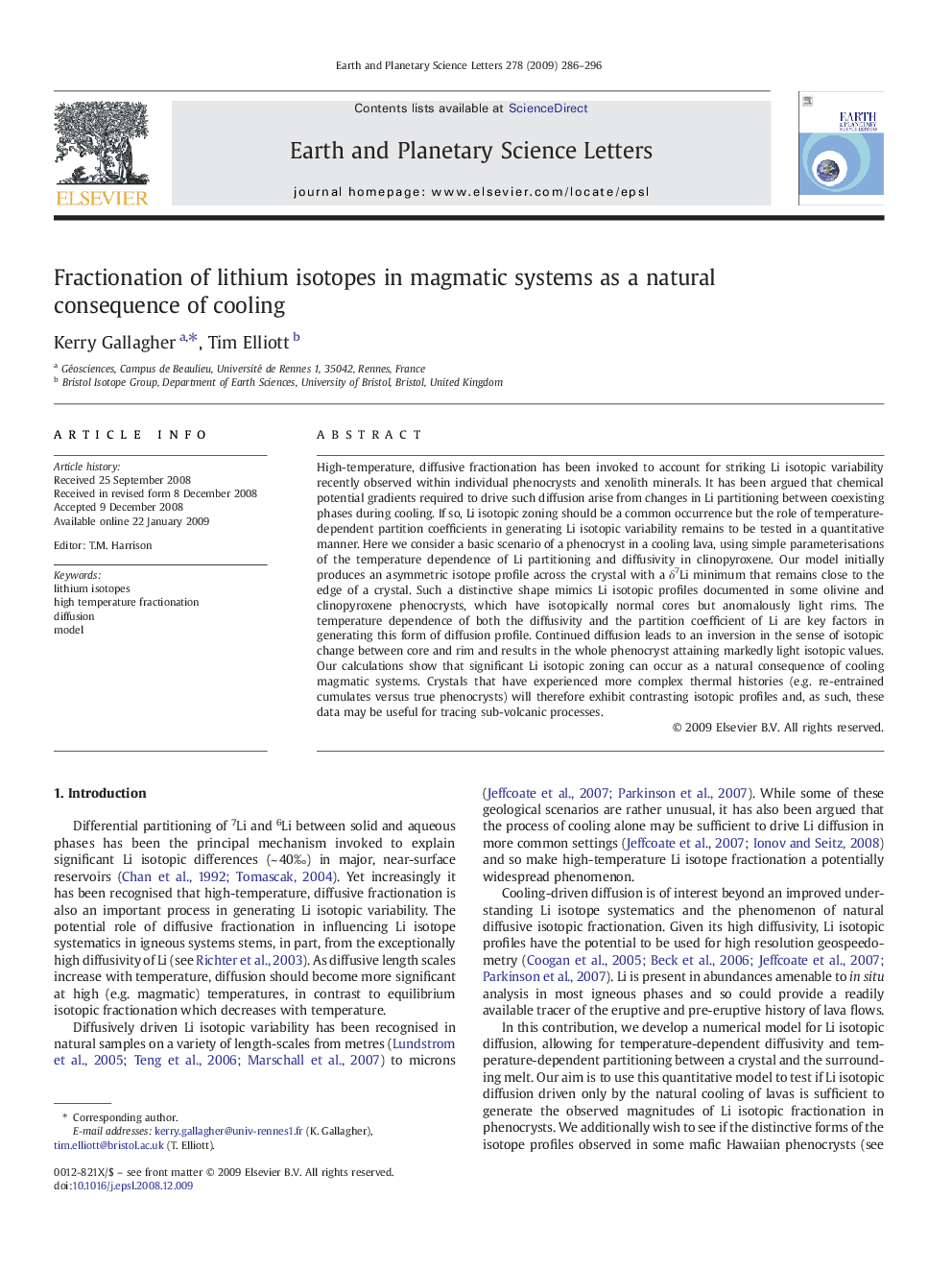| Article ID | Journal | Published Year | Pages | File Type |
|---|---|---|---|---|
| 4679329 | Earth and Planetary Science Letters | 2009 | 11 Pages |
High-temperature, diffusive fractionation has been invoked to account for striking Li isotopic variability recently observed within individual phenocrysts and xenolith minerals. It has been argued that chemical potential gradients required to drive such diffusion arise from changes in Li partitioning between coexisting phases during cooling. If so, Li isotopic zoning should be a common occurrence but the role of temperature-dependent partition coefficients in generating Li isotopic variability remains to be tested in a quantitative manner. Here we consider a basic scenario of a phenocryst in a cooling lava, using simple parameterisations of the temperature dependence of Li partitioning and diffusivity in clinopyroxene. Our model initially produces an asymmetric isotope profile across the crystal with a δ7Li minimum that remains close to the edge of a crystal. Such a distinctive shape mimics Li isotopic profiles documented in some olivine and clinopyroxene phenocrysts, which have isotopically normal cores but anomalously light rims. The temperature dependence of both the diffusivity and the partition coefficient of Li are key factors in generating this form of diffusion profile. Continued diffusion leads to an inversion in the sense of isotopic change between core and rim and results in the whole phenocryst attaining markedly light isotopic values. Our calculations show that significant Li isotopic zoning can occur as a natural consequence of cooling magmatic systems. Crystals that have experienced more complex thermal histories (e.g. re-entrained cumulates versus true phenocrysts) will therefore exhibit contrasting isotopic profiles and, as such, these data may be useful for tracing sub-volcanic processes.
